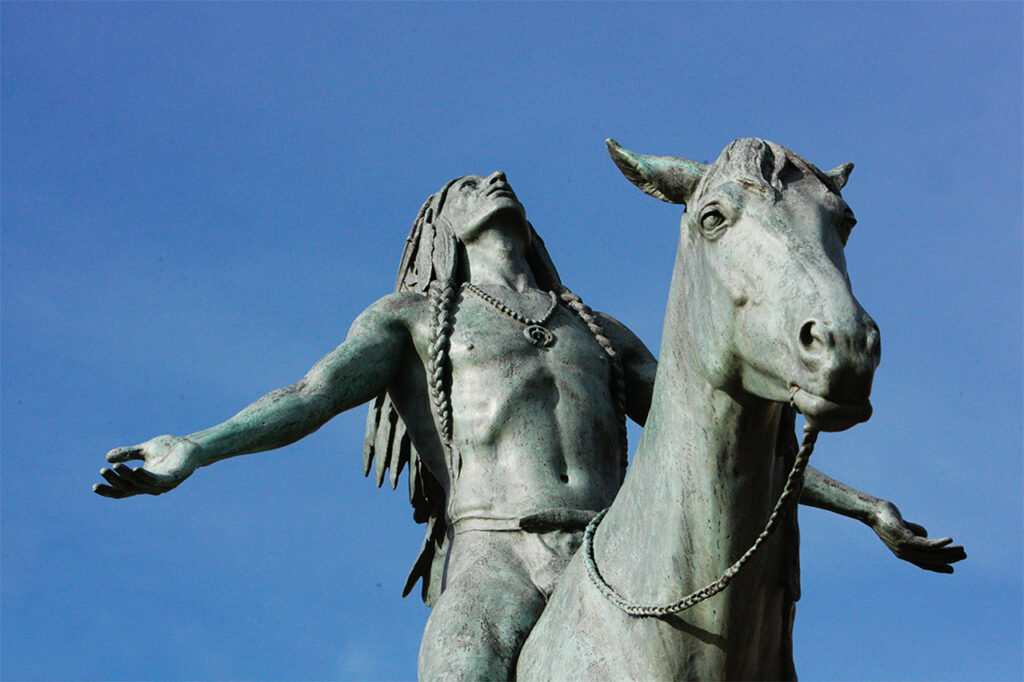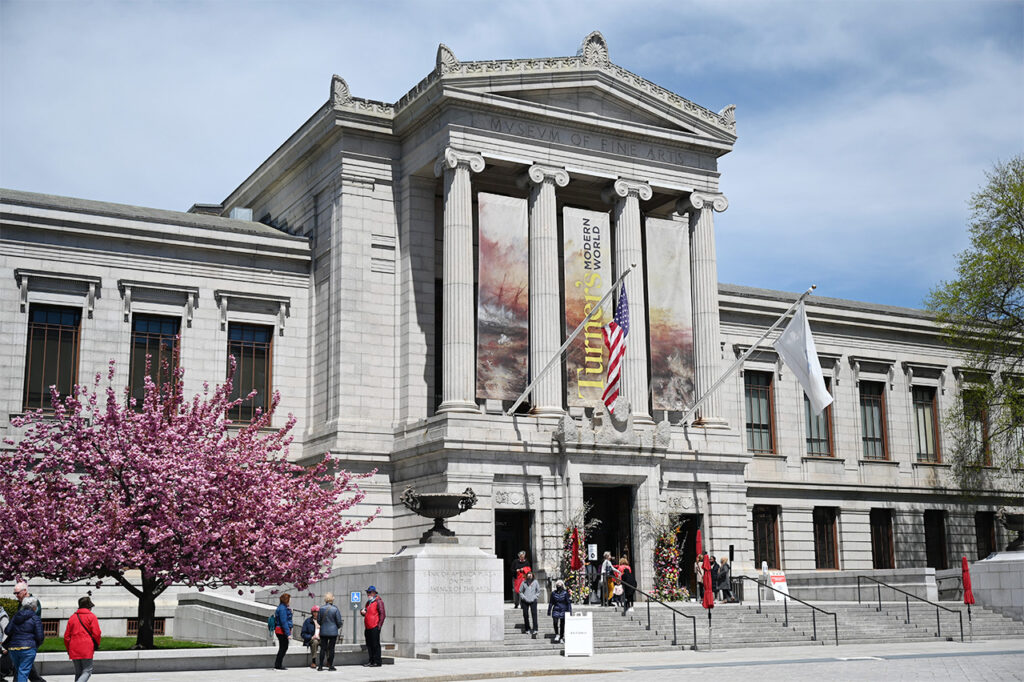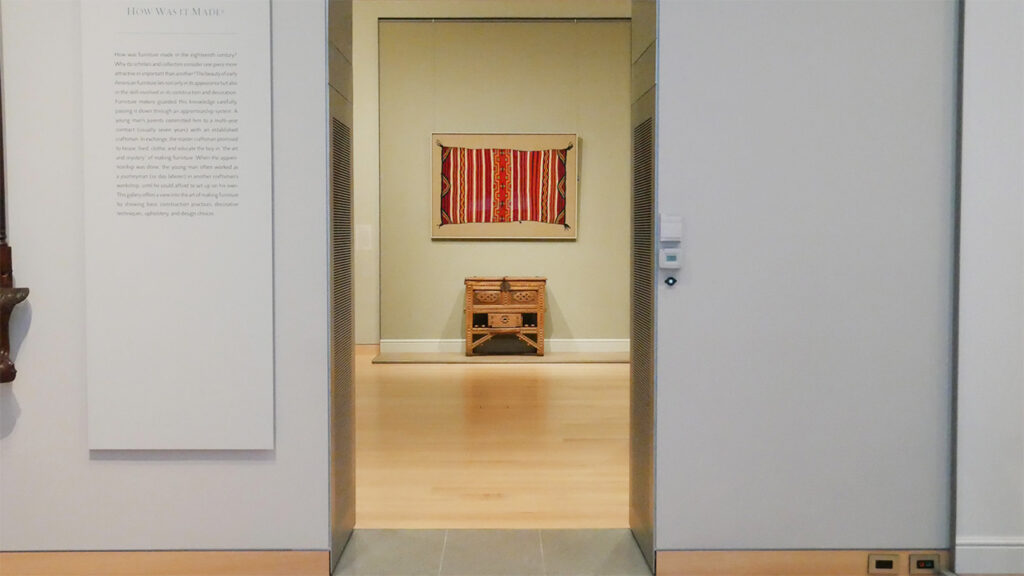In front of the Museum of Fine Arts, Boston (MFA Boston), stands the statue “Appeal to the Great Spirit” by Cyrus Dallin. An unnamed Native American man on horseback stretches his arms out to the sky. His dress is a strange synthesis of elements from different Indigenous communities — Lakota featherwork, Diné (Navajo) jewelry, and a loincloth and moccasins from unnamed groups, but makes no acknowledgement to the Massachusett, the original peoples on the land where this sculpture stands.
This statue is an apt metaphor for the ways in which museums have grappled with the zeitgeist of decolonization so far: a little confused, but with the right spirit.

“Appeal to the Great Spirit” by Cyrus Dallin, installed outside the MFA Boston. Image: Unsplash
To be clear, decolonization is the intentional practice of removing differences in the exploration, appreciation, and attention given to different groups. Decolonizing museum practices should be as much about physical change and spatial reclamations as about ideological withdrawal — the giving back of intellectual and emotional spaces, about placing equal importance on different forms of knowledge.
There’s a direct correlation between display and value. We show off the things we care about and hide the things we don’t. To restore and insist on proper respect in the display of all art objects (especially in such encyclopedic museums like MFA Boston) is a form of equity — not an attempt to equalize all art objects into one anonymous, unnamed thing.
If architectural spaces indicate our respect for the places and people they represent, MFA Boston’s Native North American Gallery (NNAG) is a prime example of a space in need of decolonial intervention.

The NNAG at the MFA Boston aims is to have its objects “enter [into] conversations” to “transcend their makers’ distance in time and geography.” Image: MFA Boston
The gallery’s aim is to have its objects “enter [into] conversations” and by doing this, “transcend their makers’ distance in time and geography.” It’s difficult to understand how this is achieved when the gallery is so isolated. The most radical intervention would be to move the NNAG to a more visible and so, more accessible space. Putting the gallery where the Huntington entrance gift shop currently is would make the gallery one of the first spaces visible upon entering the museum. This would make visitor perception of “here, there are stores” entirely fluid. Affording the work of Indigenous artists the same visibility as those of their European counterparts would clearly demonstrate MFA Boston’s commitment to decolonizing their collections.
Alternatively, decreasing the number of items on display within the current gallery and integrating some of the art objects into the upstairs Art of the America’s gallery would also achieve this. Rotating objects could be displayed on the first and second levels of the America galleries. Signage could indicate where the full NNAG collection could be found and how to get there. This would improve accessibility and reduce the distinct feeling of otherness that the NNAG currently has.

Two Indigenous art objects in the Arts of the Americas gallery in MFA Boston. Image: Eri Kosti
Additionally, within the NNAG, non-contemporary works immensely outnumber contemporary works. More emphasis could be placed on engaging and acquiring the work of contemporary or modern Indigenous artists as a means to balance the collection. Such objects, in relation to current collections would help further the dialogue between “old and new” traditions and practices, painting a clearer picture of the dynamism of these Indigenous cultures. This would also make integrating the two collections more feasible and more relevant to each collection’s respective focus.
The MFA Boston does have active collection efforts for the work of Native artists and community members based in the lands east of the Mississippi — but this is not necessarily a focus on contemporary Indigenous art.
Also, Alan Michelson’s (Mohawk) series of 6 photographs of a 2018 work Hanödaga:yas (Town Destroyer) has been introduced into the America’s entry gallery. The prominent, prime placement of Michelson’s work, directly across from the paintings of Washington, presents a revisionist perspective while also honoring the aesthetic qualities of the works it is proximate to. While this is truly a remarkable step forwards, this “intervention” remains an exception; not the norm.
It is not clear how explicitly Michelson’s work should be understood as the bridge between the “historical” and the “contemporary.” In general, these questions of what contemporary New England Indigenous Art is, how these works should be represented, and how the MFA Boston can create decolonized pathways for acquisition, care, and continued community investment are not easily answered.
A working community board made up of members of local Indigenous groups could create close and continuing working relationships between organizations like the North American Indian Center of Boston. Further, a special discretionary fund to support this work would provide a clear path for donors and the museum to demonstrate their dedication in redressing colonial presentations and treatment of Indigenous objects.
Eri Kosti is a rising junior at Boston University studying architecture and film. This piece comes from a larger project, Mending Presence: A Manifesto On and For Museums. The essay can be read in its entirety here.



